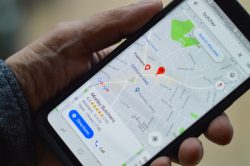With 62 per cent of global users accessing the internet through their smartphones and mobile devices accounting for about half of global internet traffic, the influence of mobile phone technology is too great to ignore.
Although this topic has been out for a while now, its always good to remind yourself that Google has placed more and more importance on mobile-first indexing and therefore optimising for mobile is highly important for your 2020 SEO strategy.
What Is Mobile Optimisation?

Gone are the days of desktop-only traffic; having a mobile-optimised website ensures that users have a pleasant and seamless experience through the leading traffic channel: mobile. But with so many brands competing for top positions on search engines, how do you get noticed on mobile?
Here are 5 tips you can use to boost your mobile marketing strategy.
1. Ensure Your Website is Mobile Responsive
Making your site mobile-friendly by design is the first step to creating a best-in-class mobile marketing strategy. All marketing content or information you publish should automatically adapt to a user’s screen, whether they are using a desktop, laptop, tablet or mobile phone.
All menus, ads and other content must display well and completely for users so they can browse through your site smoothly on their mobile devices.
There are plenty of tools out there including this one.
2. Pay attention to mobile site speed

Any delay in page loading can affect user engagement and your site conversion rate.
- A one-second delay can lead to a 4.9 per cent decrease in the content a user reads.
- A three-second delay can result in a 7.9 per cent decrease.
- Users read less or just close the page when delays occur.
Speed is everything these days and delays in loading webpages can lead to a decrease in the number of page views and a poor user experience. So, even if you follow mobile SEO tips to the letter and create stellar content, it wouldn’t matter much if site visitors end up abandoning your site due to slow page loading speeds.
If you are unsure what your page loading speeds are you can use the Google Page Speed Checker.
3. Create content that’s designed for mobile users

You also need to optimise content for your mobile audience. Since most users searching on their mobile devices are said to use more specific search words, you should be targeting those queries for mobile SEO.
4. Optimise your mobile content for local searches

To ensure you are searchable, you need to ensure that your company name, address, contact information (including your city and state name) is included on the website.
5. Always put your audience first
The type of content (including your mobile ads) you publish should be targeted to reach and engage your intended audience. You likely already have your ideal customer persona, so you should know where to find them.
If your target customers are hipsters or millennials, you’ll find them easily as they’re likely to have Twitter, Instagram, Facebook and other social media accounts. You should then ensure you have a few ad spots in these sites. And since they prefer video content to text, try investing in video marketing content.
Always add a personal touch to your marketing content. People today are averse to the hard sell, so instead of straight advertising, create marketing content that appeals to the values of your audience.
Subscribe To Our Blog
If you looking for more tips for your website, join our readers and get valuable industry insights to help boost your conversions.








